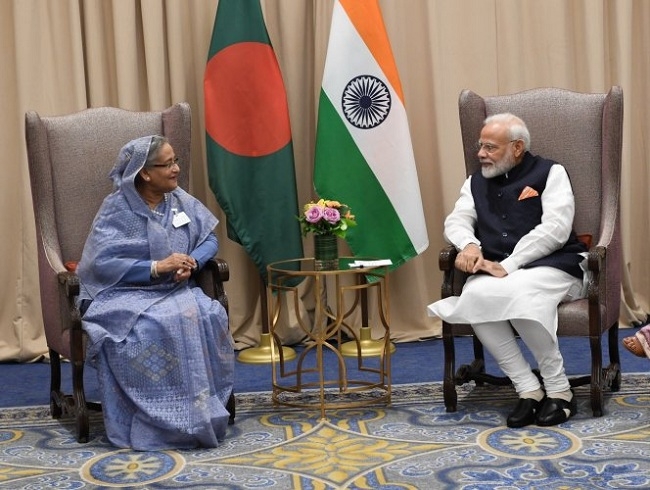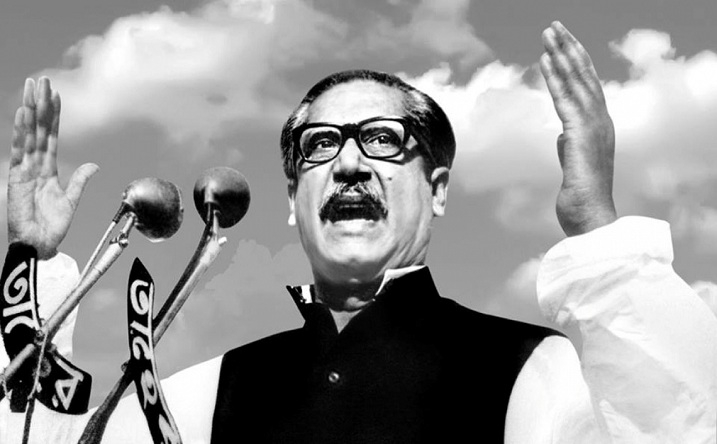CAUTION & CO-OPERATION, necessary elements of India-B’Desh ties
| Date :12-Dec-2021 |

By KARTIK LOKHANDE :
Fifty years ago, on December 16, 1971, the signing of the historic Instrument of Surrender paved way for the birth of a new nation Bangladesh. Soon, the world’s map changed. The region’s geography changed. As years passed by, geopolitical situation evolved, throwing open a plethora of issues that having a bearing on the regional dynamics. In the Swarnim Vijay Varsh, it becomes relevant to take a look at Bangladesh’s evolution in the past 50 years and what it means for India, which had played the most important role in liberation of Bangladesh in 1971. Once the Indian Armed Forces in concert with ‘Mukti Bahini’ had won the war, and dust settled down, ‘Bangapita’ Sheikh Mujibur Rahman was at the helm of affairs of the newly born nation. He strongly favoured secularism. However, within a few years, he was assassinated. What followed was mayhem. Then came a stage, when Bangladesh led by General Zia-ur-Rehman, ushered in an era of military dictatorship and accorded importance to religion. He, too, was assassinated. His successor Lt Gen Husain Muhammad Ershad declared Islam as the State religion. Since then, there is lack of clarity on whether Bangladesh as a nation has secularism or Islam as its core idea. As a result, often, there is a clash of ideologies within Bangladesh.

■ Mr. Sheikh Mujibur Rahman, Founding Father of Bangladesh who served as the first President and later as the Prime Minister of Bangladesh.
This is one of the major issues simmering within Bangladesh. The existence of radical elements in social, cultural, and political life affects not only Bangladesh but also the region including India with which it shares border that is porous at places. The attacks on minorities in Bangladesh creates ripples in India. One can take the latest example of attacks on Hindus in Bangladesh, finding echoes in Tripura state of India, and then rumours of vandalisation sparking further communal tensions in different parts of India. One can also take the example of tens of thousands taking to streets in Bangladesh last year against France, which had peeved several Islamic nations. These two recent incidents speak volumes about the evolution of Bangladesh in the past 50 years. Of course, given the import of the incidents, regional powers like India have to be always watchful and exercise caution. The refugee influx that started from erstwhile East Pakistan into Indian States of Assam and Tripura as a precursor to 1971 war between India and Pakistan, has become a legacy issue now for India. In fact, in both these Indian States, Bangladeshi influx became an election issue.
Assam saw violent movement build up against the ‘outsiders’ grabbing local resources. Even after 50 years since 1971, the influx of Bangladeshis into India is a real issue.The issues relating to grant of citizenship to Bangladeshi migrants is often crop up and become a matter of political debate and social tensions. One major reason for influx is porosity of a long border, through which people can come and go. There are places where peopleto-people connect across the border is very deep and emotional. However, porosity of border at places has proven to be an opportunity for cross-border smugglers of stolen vehicles, cattles, cough syrups (!), a kind of narcotics tablets locally known as ‘Yaba’, and even human trafficking and circulation of fake Indian currency notes. In the recent past, Rohingyas added to the worries of Bangladesh, and their spillover made many skeptical in India. Of course, these raise security concerns for both the countries. Over the years, after several rounds of negotiations through testing times, India and Bangladesh did sign a historic Land Boundary Agreement (LBA).
Though much progress has been made, the exchange of enclaves is yet to be fully completed. For, at some places, the border between the two countries passes through a farm, or through a pond. There is a place, where a coconut tree is rooted in one country, and its fruit falls in another country! Strange as they may sound, but these are real issues that delay the process of plugging the porousness of the border. These issues not only pose security challenges, but also have social and economic implications. Since creation of Bangladesh, India and Bangladesh both have been close friends, barring a few disturbing interludes. Especially, in the past few years, the bond has grown stronger, with the Governments of India and Bangladesh enjoying the best-ever friendly ties at various levels -- security, diplomacy, art and culture, Government, education, agriculture, textile, energy, river water sharing, business, and regional co-operation. India’s Border Security Force and Border Guards of Bangladesh have been acting upon a Comprehensive Border Management Plan. To give further boost to ties, both the countries have signed several Memorandums of Understanding to tackle different issues ranging from human trafficking to smuggling, and also increasing cross-border trade. On cultural front, there exists a deep bond among people of both the countries. In fact, the depth of the bond can be gauged from the fact that the national anthem of India and Bangladesh both has been penned by Indian Nobel laureate Rabindranath Tagore. ‘Rabindra Sangeet’ as well as ‘Nazrul Geeti’ are still popular on both sides of the border.
Bengali literature, theatre, songs, movies, poetry, music, cuisine, traditional costumes still bond people. On trade front too, both the countries are trusted partners of each other. In fact, Bangladesh is one of the biggest trade partners of India in South Asia. India has always appreciated the way Bangladesh’s economy has made progress, especially in comparison with Pakistan, which has earned the dubious distinction of a failed State. But, there are forces that do not like the people-to-people connect and often act to drive a wedge between communities over one or the other provocation. One must appreciate the present regime in Bangladesh headed by Sheikh Hasina, the daughter of ‘Bangapita’ Mujibur Rahman, for upholding the principles of democracy and trying her best to rein in radical forces. Otherwise, the situation might have been very difficult not only within Bangladesh but also in the Indian sub-continent. What is needed in the larger interest of regional peace and spirit of collaboration is deepening of ties especially in the area of combating terrorism and hegemonistic plans of the countries like China that are out there to lure smaller countries into a debt trap and make them fall in place in her expansionist designs.
One cannot deny the existence of elements who are still angry at the defeat of ‘West Pakistan’ at the hands of India in 1971 and creation of Bangladesh. These elements often act as collaborators, if not perpetrators, of terrorist activities. Such forces inimical to the interests of both the countries are working subcutaneously and drawing nefarious designs like ‘Brihat Bangladesh’ raising concerns especially in India. To counter such designs, India and Bangladesh must bond more closely and mature the security co-operation into Defense and Intelligence sharing collaboration. Both the countries must strengthen people-to-people connect by way of deepening cultural exchanges. In the past 50 years, the relationship between India and Bangladesh has had two keywords -- caution and co-operation. Deepening of trust and safeguarding not only each others’ interests but also of the region as a whole, will pave way for a shared brighter and safer future for both the countries for at least next 50 years.